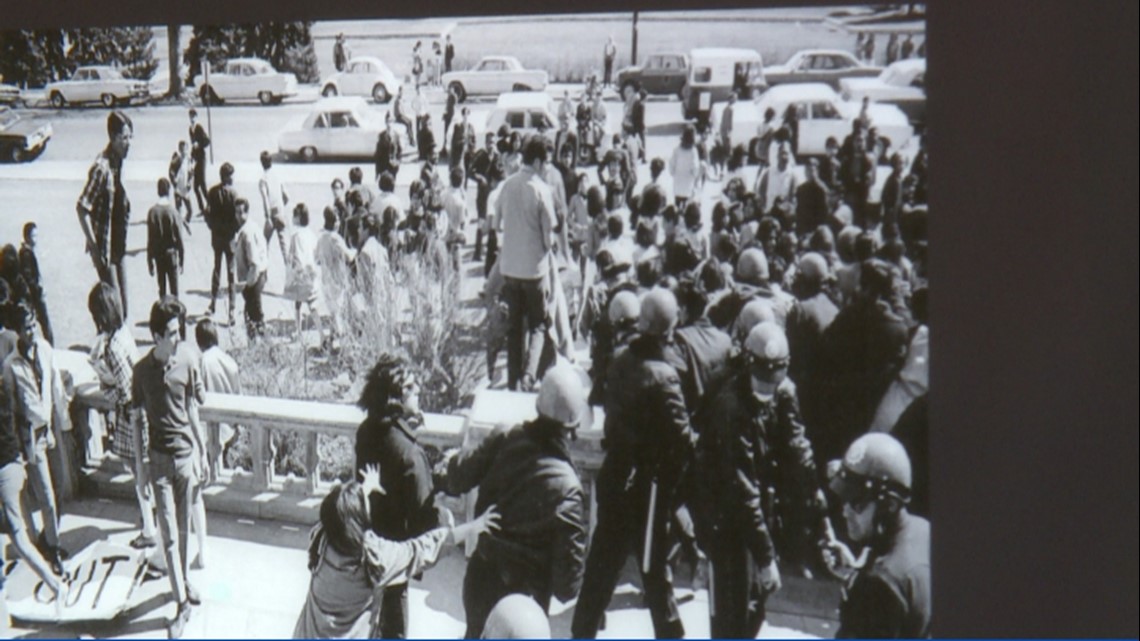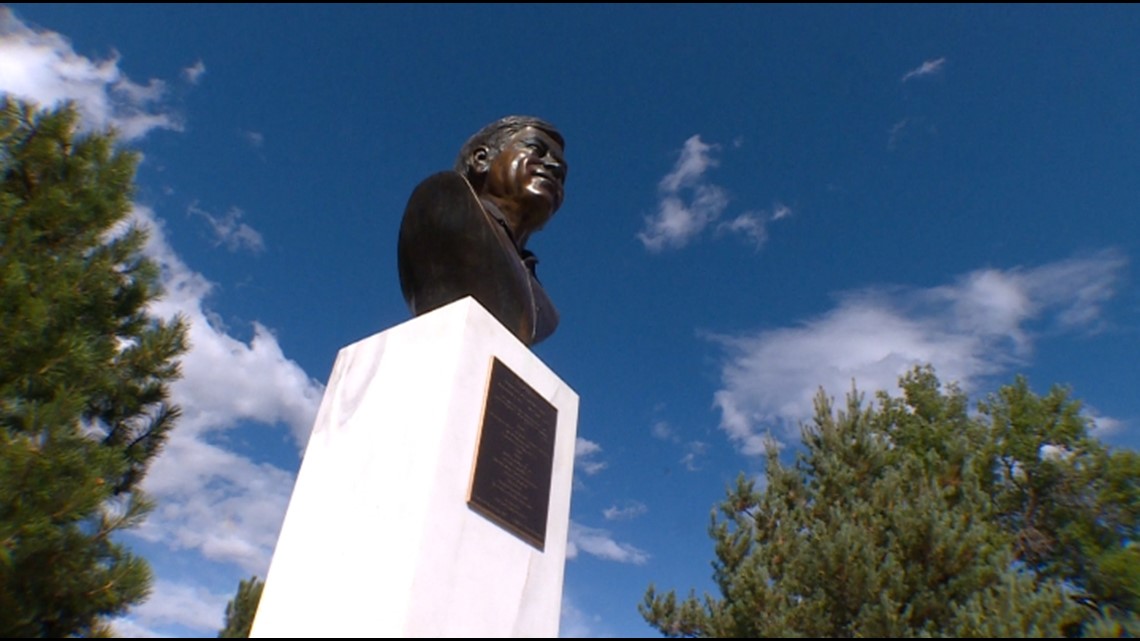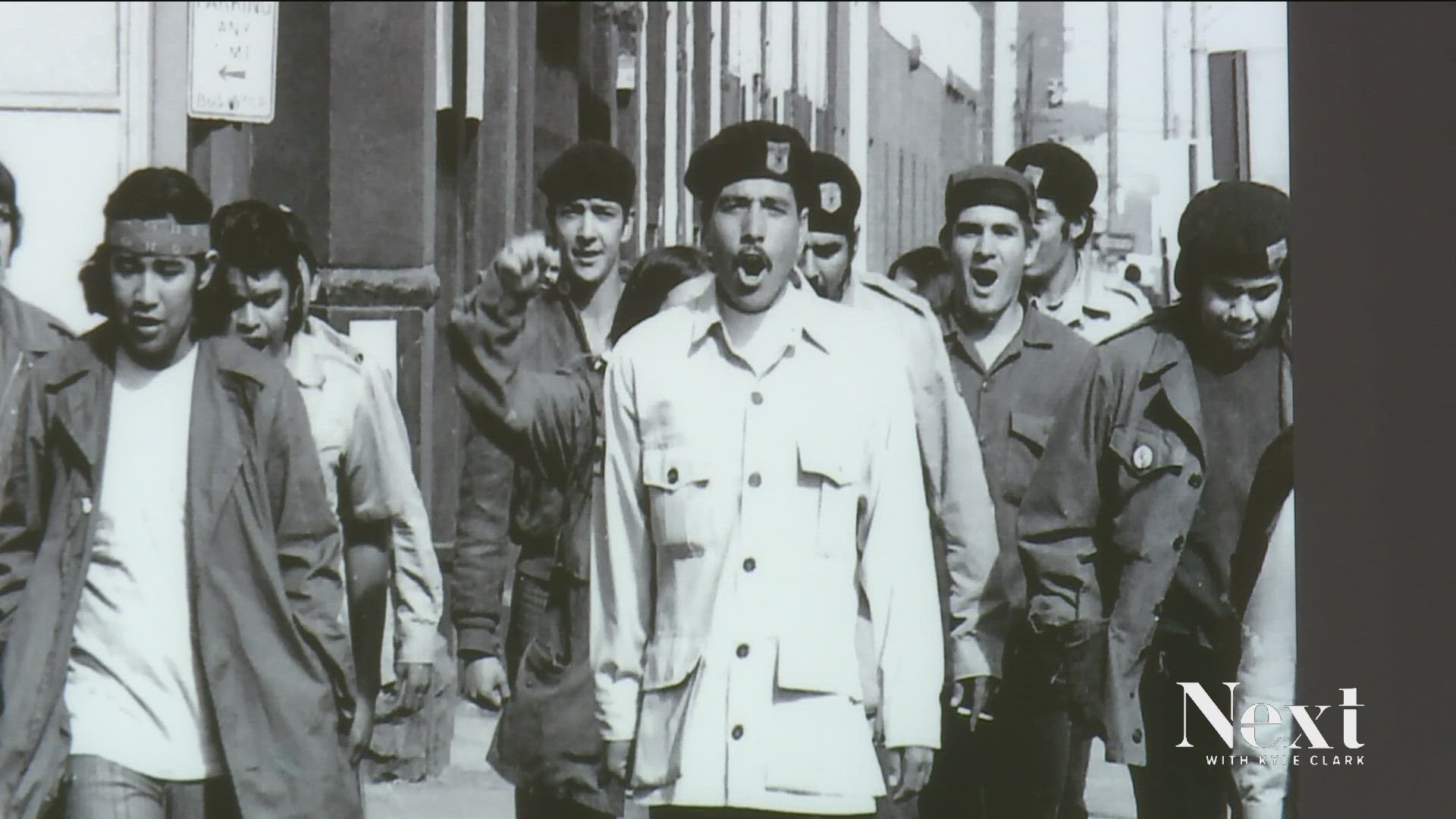DENVER — There are parts of Colorado history everyone knows well. Then there are topics that made huge impacts here, yet rarely make it into the textbooks taught in school. The Chicano Civil Rights movement of the 1960s and '70s changed Colorado, yet the fight to make sure everyone knows what happened continues.
"This is actually history that is very rare to learn about in school, still," said Lucha Martinez de Luna, associate curator of Hispano, Chicano, Mexican American, Latino Culture and History at History Colorado. "Even though these are major events that happened in Colorado that shifted what happened later in Colorado."
Lucha helped curate the exhibit on the Chicano Civil Rights Movement called "El Movimiento." She wants to share the experiences of activists like her mother and father.
The Chicano rights movement started in the '60s when young activists stood up to fight for social justice and equality. At West High School in 1969, students walked out of class demanding a better education. Lucha’s father was there.


"What they were really protesting was the extreme racism and discrimination in the high school," said Lucha. "This movement was led by the youth. Also, a lot of women were very, very prominently leading a lot of these protests and movements that were happening all throughout Colorado."
The exhibit at History Colorado tells the story of Chicano history dating back to the Treaty of Guadalupe Hidalgo signed in 1848. It's all a part of the events that's led Colorado to where it is today.
"For me, it’s more about connecting. Making a bridge from the past to the present and to the future. That’s my real goal," said Lucha.
Throughout Denver, there are reminders of La Lucha, as many call the movement.
"As an elder, what we’ve learned is that we have to leave a legacy," said Dr. Ramon Del Castillo, a retired professor at Metropolitan State University of Denver (MSU) and former department chair of Chicano studies at the school. "Because you can do something throughout history, and nobody knows about it unless you have artifacts, unless you have poetry, unless you have the written word, it goes into oblivion."
We met him at Cesar Chavez Park in Denver, where the history of the man who fought for farm workers’ rights is on display. People like Chavez and Rodolfo “Corky” Gonzales led the charge to fight for Chicano rights.


"What he believed in and what he began to say is that government didn’t meet the needs of the people. That it was going to take the people organizing to make the world change," said Ramon.
He lived the history he later taught at MSU.
"I saw for myself that they had not been given this part of the history. It had been watered down and it was not necessarily correct," said Ramon. "They made the statement that the time had come for Chicano’s to stand up and fight for their civil right, for their human rights."
Chicano history is Colorado history. From 1848 and the Treaty of Guadalupe Hidalgo to the walk outs of the 1960’s and all the way to today. A fight that continues to make sure everyone knows.
"It’s not necessarily just their history. It’s the history of Colorado," said Lucha. "But people of color were being excluded from that history and still to this day continue to be excluded."
SUGGESTED VIDEOS: Full Episodes of Next with Kyle Clark

